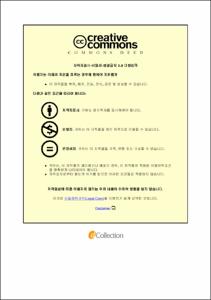갯벌의 생태계서비스 잠재력 지표로서 에머지 유입 특성 평가
- Abstract
- This study aimed to investigate the applicability of using renewable emergy inflow to tidal flat ecosystems of Korea for a rapid assessment tool for the potential of ecosystems services provision. Renewable emergy inflow, fishery production and primary production were calculated or estimated, and macrofaunal community structures and ecological indices were analyzed. Statistical analyzes were carried out to understand relationships between renewable emergy inflow and selected ecosystem services (fishery production and primary production), and between renewable emergy inflow and community structures and ecological indices. A total of thirteen tidal flats in the western and the southern coast of Korea were selected for emergy evaluations based on data availability, geomorphology, river input, and tidal regime.
Annual renewable emergy inflow per unit area of tidal flats decreased from southern Ganghwa tidal flat (4.25E+16 sej/ha/yr) in the western coast to Nakdong River estuary tidal flat (2.75E+15 sej/ha/yr) in the southeastern coast. Emergy of annual fishery production per unit area showed a higher average value in tidal flats of the western coast (2.14E+16 sej/ha/yr) than those of the southern coast (2.35E+15 sej/ha/yr). Emergy of annual gross primary production per unit area increased from southern Ganghwa tidal flat (1.50E+16 sej/ha/yr) to Nakdong River estuary tidal flat (2.10E+16 sej/ha/yr).
Results of T-test indicated significantly higher values in tidal flats of the western coast than those of the southern coast, in terms of total number of species (t=2.385, p=0.036), number of species per unit area (t=2.097, p=0.060), density (t=2.230, p=0.048), and biomass (t=2.324, p=0.040). Ecological indices (Margalef richness, Shannon-Wiener diversity, Pielou evenness, Simpson diversity) did not show significant differences in average between tidal flats of the western coast and those of the southern coast. Annual renewable emergy inflow per unit area showed a significant positive correlation with annual fishery production per unit area in the tidal flats selected for this study (r=0.763, p=0.002), and a significant negative correlation with annual gross primary production per unit area (r=-0.576, p=0.040). Emergy inflow and macrofauna were not significantly correlated each other. In summary, renewable emergy inflow provides a potential utility in rapid assessment for the potential of ecosystems services provision in tidal flats of Korea.
- Issued Date
- 2018
- Awarded Date
- 2018. 8
- Type
- Dissertation
- Publisher
- 부경대학교
- Affiliation
- 부경대학교 대학원
- Department
- 대학원 생태공학과
- Advisor
- 강대석
- Table Of Contents
- 목차 ⅰ
초록 ⅹ
Ⅰ. 서론 1
Ⅱ. 이론적 배경 4
2.1 우리나라 갯벌 현황 4
2.2 갯벌의 생태계서비스 8
2.2.1 갯벌의 생태계서비스 목록 8
2.2.2 갯벌의 생태계서비스 가치 평가 12
2.2.2.1 선호도기반 평가 12
2.2.2.2 생물리적 평가 15
2.3 최대 에머지흐름의 원리 17
Ⅲ. 재료 및 방법 19
3.1 연구대상 19
3.2 에머지 평가절차 27
3.2.1 평가 모델 27
3.2.2. 에머지 평가표 29
3.3 에머지 평가 자료 31
3.4 생태계서비스 평가 33
3.4.1 공급서비스 33
3.4.2 지원서비스 34
3.5 대형저서동물군집의 생태지표 및 생태지수 37
3.5.1 생태지수 계산식 38
3.6 통계분석 40
IV. 결과 41
4.1 연구대상 갯벌의 물리적 특성 41
4.2 연구대상 갯벌의 생태적 특성 44
4.2.1 엽록소-a와 일차생산 44
4.2.2 대형저서동물 군집의 생태지표 및 생태지수 48
4.2.3 수산물 생산 58
4.3 에머지 평가 60
4.3.1 에머지 유입 특성 60
4.3.2 생태계서비스 가치 63
4.4 에머지 유입량과 생태계서비스의 관계 67
4.4.1 에머지 유입량과 공급서비스 67
4.4.2 에머지 유입량과 지원서비스 68
4.5 에머지 유입량과 대형저서동물 군집의 관계 70
Ⅴ. 고 찰 76
1. 갯벌의 지형·지리적 특성에 따른 일차생산 및 대형저서동물 군집의 특성 76
2. 에머지 유입량과 생태지표의 관계 78
3. 에머지 유입량과 수산물 생산량의 관계 79
4. 갯벌의 자연환경 요소와 일차생산량의 관계 80
5. 에머지 유입특성과 갯벌생태계 관리 83
Ⅵ. 결 론 85
참고문헌 88
Appendices 97
- Degree
- Master
- Files in This Item:
-
-
Download
 갯벌의 생태계서비스 잠재력 지표로서 에머지 유입 특성 평가.pdf
기타 데이터 / 10.26 MB / Adobe PDF
갯벌의 생태계서비스 잠재력 지표로서 에머지 유입 특성 평가.pdf
기타 데이터 / 10.26 MB / Adobe PDF
-
Items in Repository are protected by copyright, with all rights reserved, unless otherwise indicated.